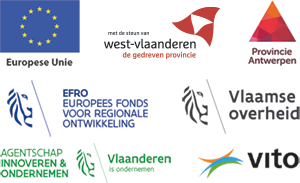Nieuwsbericht
New Commission guidance document on the Application of Water Balances
The European Commission working hand-in-hand with the representatives from the Member States (MS) finalized in May 2015 and released in October a new guidance document on water balances. The document is a practical guide to support in the objectives of the Water Framework Directive by using the river basin management approach.
The document consists of two parts: a Policy summary and a Technical report. The aim of the document is to promote a coherent framework to cross-evaluate the information on drivers, pressures and impacts on water quantity (including in terms of the coherence between water abstraction and water recharge, water flows between water bodies/catchments, storage changes over time, etc.).
Water balances are not yet systematically developed and applied today in European catchments facing quantitative imbalances. Still, many water authorities in different MS have experience with the application of (full or partial) water balances or with assessment frameworks that have similarities with water balances, and the guidance document provides useful examples.
Water balances, besides their natural components of the hydrologic cycle, needs to support a wider range of water management decisions. Therefore they can expanded and complemented with additional parameters relevant to water quality, water accounting, the socio-economic importance of water use (e.g. providing economic information such as gross income, value added or employment collected on the main water abstractors), management and policy. The important components of water balances include, for example, water use per economic sector, alternative water supplies (desalination, water reuse), water demands, conveyance efficiency and losses, or economic information on the main water users (e.g. yields, income generated, etc.). In this way an overall picture of the role of water in the economic development of the water catchment/river basin is obtained.
Guidance provides the description of the component of water balances, its development at the right scale, application cases in practice to support water management, expanding the physical water balance for addressing complementary water management issues (such as, for water quality, or integrating the economic dimensions for water use and management). In the extensive annexes, there are presented eight case studies, with the key methodological lessons learned from the EU-funded pilot studies.
Better and wider application of water balances can strengthen the assessment of the potential risk of quantitative imbalance, can also be used to select measures for the WFD Programme of Measures, can also support the climate-proofing of measures, and the selection of measures that enhance the resilience of aquatic ecosystems, and other wider applications.
The Commission document is available to download from Vlakwa website: policy summary - technical report.
